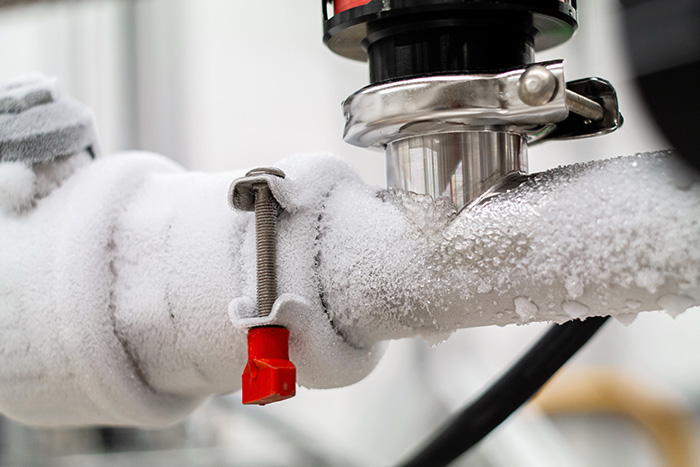Preventing Your Pipes from Freezing: Top Strategies
Preventing Your Pipes from Freezing: Top Strategies
Blog Article
Were you trying to locate information and facts involving How to prepare your home plumbing for winter weather?

Winter can damage your plumbing, especially by freezing pipes. Here's just how to stop it from taking place and what to do if it does.
Introduction
As temperature levels decrease, the risk of icy pipelines boosts, potentially bring about expensive repair work and water damage. Recognizing just how to avoid icy pipes is important for homeowners in cool climates.
Understanding Icy Pipes
What causes pipelines to freeze?
Pipelines freeze when exposed to temperatures listed below 32 ° F (0 ° C) for extended durations. As water inside the pipelines ices up, it increases, taxing the pipeline wall surfaces and possibly triggering them to rupture.
Dangers and damages
Frozen pipes can cause water disturbances, residential or commercial property damage, and pricey fixings. Ruptured pipes can flood homes and create substantial architectural damages.
Signs of Frozen Pipes
Recognizing frozen pipelines early can avoid them from bursting.
Exactly how to identify frozen pipelines
Search for lowered water flow from taps, unusual smells or noises from pipes, and noticeable frost on exposed pipes.
Avoidance Tips
Shielding prone pipes
Wrap pipelines in insulation sleeves or utilize warm tape to safeguard them from freezing temperatures. Focus on pipelines in unheated or outside locations of the home.
Heating strategies
Maintain interior rooms effectively heated up, especially locations with plumbing. Open up cabinet doors to allow cozy air to circulate around pipelines under sinks.
Safeguarding Outdoor Plumbing
Yard tubes and outside faucets
Separate and drain garden pipes prior to winter months. Set up frost-proof faucets or cover exterior faucets with protected caps.
What to Do If Your Pipes Freeze
Immediate actions to take
If you suspect frozen pipelines, maintain faucets open to relieve stress as the ice melts. Use a hairdryer or towels taken in hot water to thaw pipelines slowly.
Long-Term Solutions
Architectural adjustments
Take into consideration rerouting pipes far from exterior wall surfaces or unheated areas. Include extra insulation to attic rooms, cellars, and crawl spaces.
Updating insulation
Purchase high-quality insulation for pipes, attic rooms, and wall surfaces. Appropriate insulation aids keep consistent temperature levels and decreases the threat of icy pipes.
Conclusion
Stopping icy pipelines requires proactive steps and quick responses. By comprehending the causes, indications, and preventive measures, homeowners can shield their plumbing throughout cold weather.
5 Ways to Prevent Frozen Pipes
Drain Outdoor Faucets and Disconnect Hoses
First, close the shut-off valve that controls the flow of water in the pipe to your outdoor faucet. Then, head outside to disconnect and drain your hose and open the outdoor faucet to allow the water to completely drain out of the line. Turn off the faucet when done. Finally, head back to the shut-off valve and drain the remaining water inside the pipe into a bucket or container. Additionally, if you have a home irrigation system, you should consider hiring an expert to clear the system of water each year.
Insulate Pipes
One of the best and most cost-effective methods for preventing frozen water pipes is to wrap your pipes with insulation. This is especially important for areas in your home that aren’t exposed to heat, such as an attic. We suggest using foam sleeves, which can typically be found at your local hardware store.
Keep Heat Running at 65
Your pipes are located inside your walls, and the temperature there is much colder than the rest of the house. To prevent your pipes from freezing, The Insurance Information Institute suggests that you keep your home heated to at least 65 degrees, even when traveling. You may want to invest in smart devices that can keep an eye on the temperature in your home while you’re away.
Leave Water Dripping
Moving water — even a small trickle — can prevent ice from forming inside your pipes. When freezing temps are imminent, start a drip of water from all faucets that serve exposed pipes. Leaving a few faucets running will also help relieve pressure inside the pipes and help prevent a rupture if the water inside freezes.
Open Cupboard Doors
Warm your kitchen and bathroom pipes by opening cupboards and vanities. You should also leave your interior doors ajar to help warm air circulate evenly throughout your home.

I stumbled upon that blog post about Winter Plumbing Precautions: Preventing Frozen Pipes while perusing the web. Do you know another person who is interested by the subject? Do not hesitate to share it. We recognize the value of your readership.
Further Details Report this page